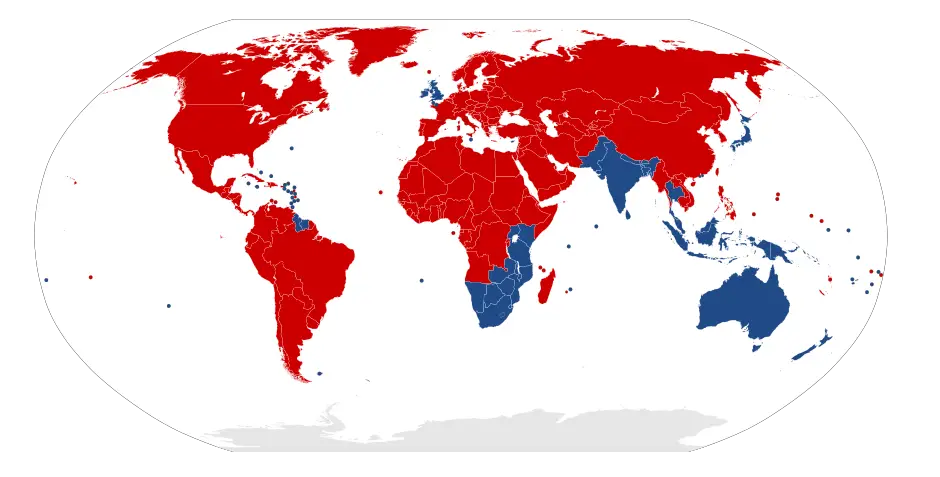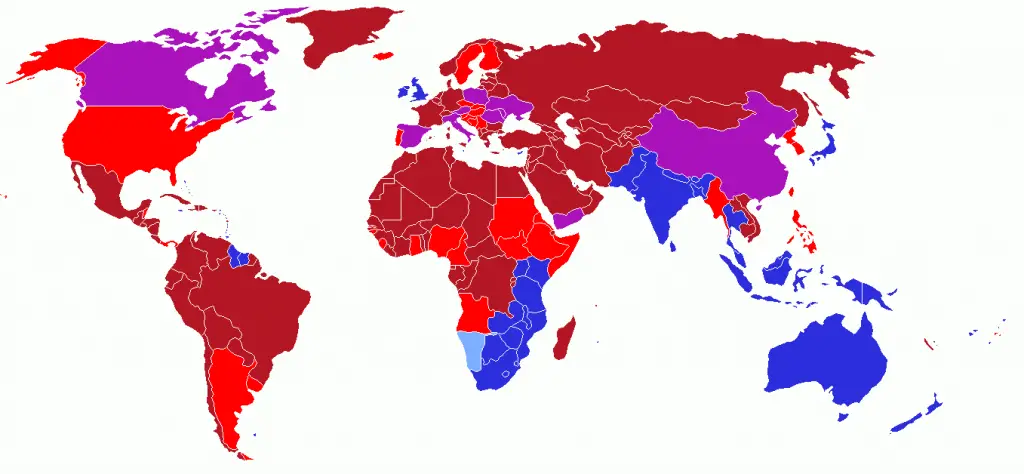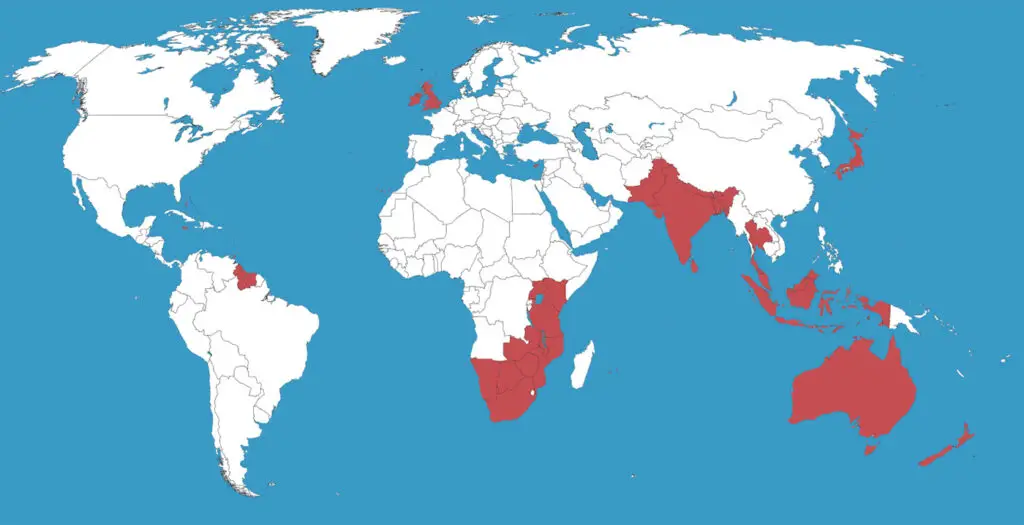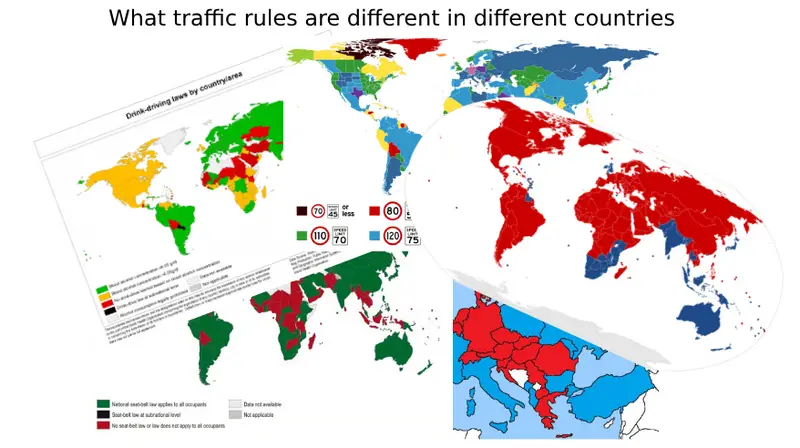Left or Right? The Fascinating World of Driving Directions
Have you ever wondered why some countries drive on the left while others drive on the right? The history behind driving directions is more fascinating than you might think, and it’s all captured in the ever-changing landscape of world maps.
Table of Contents
A Tale of Two Sides
Back in 1919, the world was perfectly balanced when it came to driving directions. 104 territories drove on the left, and an equal number were kept to the right. Fast forward to today, and the balance has dramatically shifted. Now, 163 countries and territories practice right-hand traffic, while only 76 stick to the left.

This massive change didn’t happen overnight. Between 1919 and 1986, 34 territories made the switch from left to right. But why did these different patterns emerge in the first place?
The Origins of Left vs. Right
The choice between left and right-hand traffic has deep historical roots, dating back to long before the invention of the automobile. Here are some intriguing theories about why countries initially chose one side over the other:
- Sword-wielding knights: In medieval Europe, it’s believed that people traveled on the left side of the road. Right-handed knights preferred to keep to the left to have their right arm closer to potential opponents. This practice influenced many countries, especially those with strong ties to Britain.
- Napoleon’s influence: Countries that fell under Napoleon’s rule often switched to right-hand traffic. Some historians suggest Napoleon favored the right because he was left-handed, while others argue it was to differentiate from the British system.
- Wagon drivers: In countries where large wagons were common, drivers would sit on the left rear horse, using their right hand to control the team. This led to right-side driving so they could better see oncoming traffic.
- Maritime traditions: Some suggest that maritime practices influenced road rules. Ships traditionally pass port-to-port (left to left), which may have influenced left-hand driving in some seafaring nations.
The Great European Switch
Europe saw some of the most significant changes. Take a look at this snapshot from 1922:

Back then, the United Kingdom, Ireland, Portugal, Switzerland, Czechia, and Hungary all drove on the left. Today, only the UK and Ireland have kept this tradition. The others joined their continental neighbors in switching sides.
Finland led the charge, changing to right-hand traffic way back in 1858. This set off a domino effect across the continent and beyond.
A World in Transition
The reasons for these changes varied. Some countries switched to align with their neighbors, making cross-border travel easier. Others made the change as they gained independence or underwent significant political shifts.

Red – driving on the right (Right-Hand Traffic)
Light Red – driving on the right, but in the past, this nation drove on the left.
Purple – driving on the right, but in the past, this state had different laws of the road depending on one’s place.
Blue – driving on the left (Left Hand Traffic)
Light Blue – driving on the left, but in the past, this nation drove on the right.
This world map tells a story of global transformation. The light red areas show countries that used to drive on the left but now keep to the right. Interestingly, some places (shown in purple) even had different rules depending on where you were in the country!
Left-Hand Holdouts
While the majority of the world now drives on the right, left-hand traffic isn’t going extinct. In fact, countries that drive on the left account for about a sixth of the world’s land area and a quarter of its roads. This includes some major players like the United Kingdom, Japan, and Australia.

These left-hand driving nations are often islands or former British colonies, highlighting how historical connections can shape modern practices. The British Empire’s vast influence played a significant role in spreading left-hand traffic across the globe.
For those fascinated by these global patterns, world maps are an invaluable tool. They allow us to visualize these changes and understand how our interconnected world has evolved over time. If you’re looking to add some cartographic flair to your home or office, consider these world maps available on Amazon:









Sweden, not Switzerland (which I guess is meant by “Swiss”).
And Czechoslowakia, not Czechia.